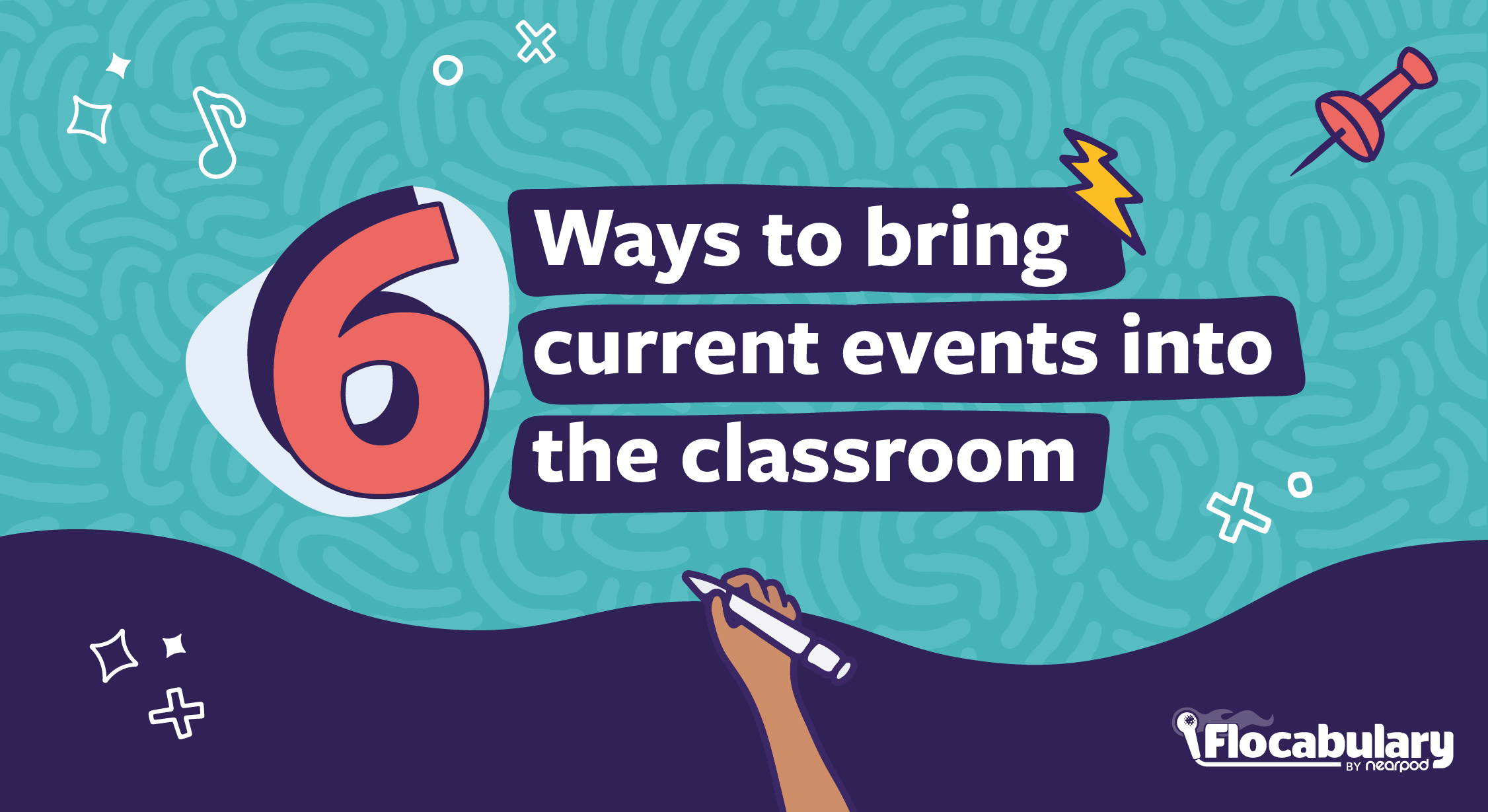
6 Ways to teach with current events for students in the classroom
Why teach current events in the classroom?
Teaching current events for students is crucial as it fosters a deeper understanding of the world and cultivates media literacy skills. By integrating news and into the curriculum, teachers provide students with opportunities to engage in discussions that are relevant and meaningful. This approach not only enhances their awareness of global issues but also encourages them to analyze, evaluate, and form their own opinions based on factual information. Empower students to become informed, responsible citizens capable of navigating an evolving, complex, and interconnected world by implementing current events into instruction.
New to Flocabulary? Teachers can sign up for a trial to access our lesson videos and assessment activities. Administrators can get in touch with us to learn more about unlocking the full power of Flocabulary through Flocabulary Plus.
Flocabulary current events: Week in Rap
The Week in Rap (WIR) is a weekly video series of a recap of important headlines and current events for students using a rap song format. Released every Friday, the Week in Rap for grades 6-12 and Week In Rap Junior for grades 3-5, is the perfect resource teachers can rely on for using current events in the classroom. Each video lesson also includes vocabulary words and current events activities paired with each lesson. Learn more about the Week and how it’s created.
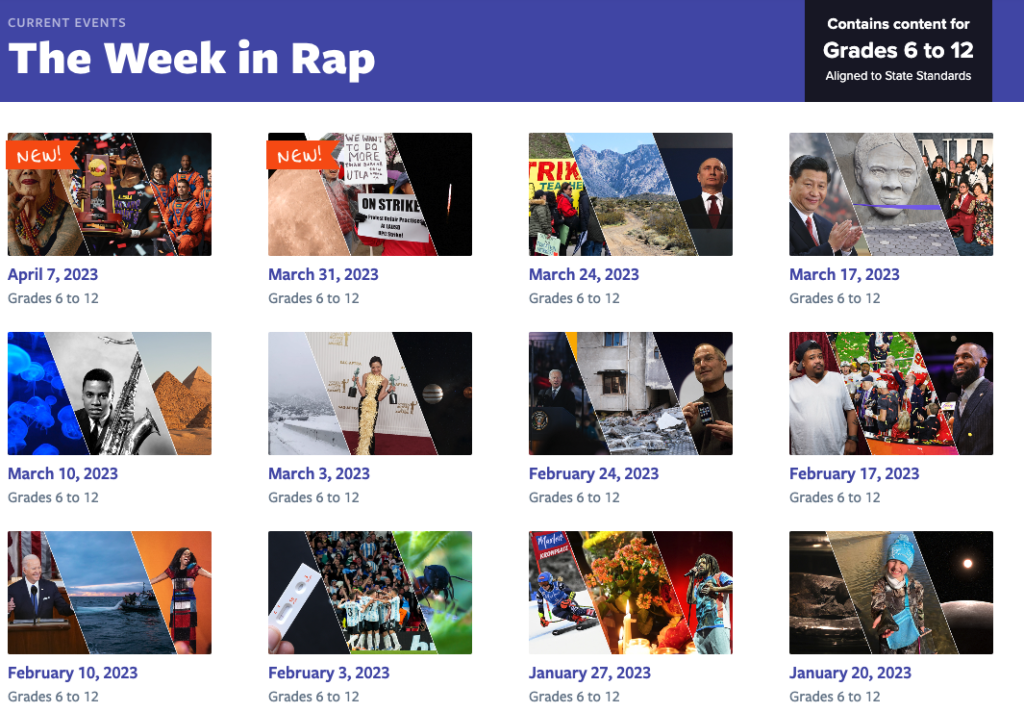
6 Ways to teach with current events for students in the classroom
1. Make real world and text connections
Encourage students to make text connections with current events to bridge the gap between what they learn in class and the world outside. By making text connections, students draw parallels, comparisons, and contrasts between the information presented in their curriculum and the events unfolding in the world. For instance, when studying historical events, literature, or scientific concepts, teachers can ask students to identify similar themes, patterns, or cause-and-effect relationships in contemporary news stories. This encourages current event articles for students to be viewed through multiple lenses, empowering them to become media literate and engaged global citizens.
Flocabulary’s video-based lesson plans can help students connect one text to another text, a text to themselves, and a text students read to the world. Week in Rap videos is a great way for students to connect with what’s happening in the world to other areas of study since it highlights age-appropriate news stories related to all subjects, including science, politics, environment, sports, entertainment, and more.
2. Learn what interests them through news stories
Exploring topics that resonate with students’ interests is a crucial strategy in the classroom. When teachers integrate news and real-life events aligned with their students’ passions, hobbies, or concerns, it captures their attention and deepens their engagement with the subject matter. By leveraging current events that intersect with students’ interests—such as sports, entertainment, environmental issues, or technology advancements—educators can create a more personalized and relevant learning experience. This approach enables teachers to harness students’ intrinsic motivation, allowing them to delve into discussions, research, and activities centered around topics they find compelling.
Use the Week in Rap to focus on why the specific headlines were selected for the song and then have students pick headlines they’d like to see featured. Assign students with a Lyric Lab activity to have them write their own rap about a news story. Lyric Lab is an interactive learning experience where students write their own rap line-by-line on a graphic organizer using the bank of vocabulary words and rhyme generator.
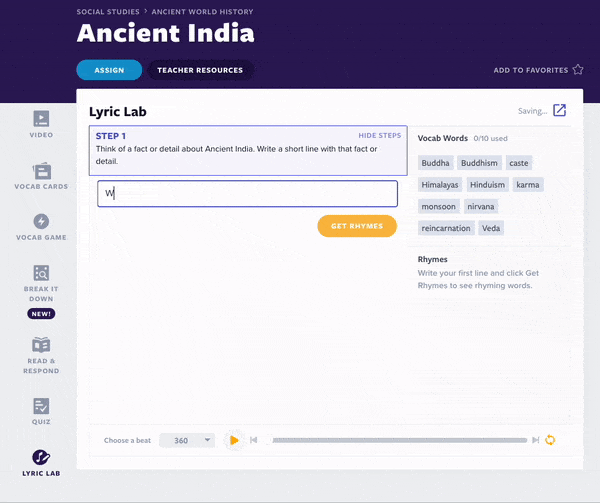
3. Analyze the structure and language used in articles
News stories are usually written in a very clear, easy-to-read way. Students can analyze the structure of a news article and practice finding the main idea while they’re at it. By dissecting the structure of news articles—such as headlines, leads, body paragraphs, and conclusions—students gain insight into how information is organized and presented. Moreover, delving into the language used in news articles, including tone, bias, persuasive techniques, and the selection of specific words or phrases, allows students to develop critical media literacy skills. Through this analysis, students can discern the intentions behind the information presented, evaluate the credibility and reliability of sources, and recognize potential biases or perspectives conveyed by the language used.
Create an assignment to have students practice identifying the main idea of a news story, analyzing the order of information, and discerning the tone and bias of the language being used. Social studies teachers can use this to help students learn about current events and the importance of media literacy. By presenting multiple perspectives on real-world issues, students can critically evaluate news from different viewpoints.
Flocabulary has lessons on all subjects for elementary, middle school, and high school. Explore our English Language Arts (ELA) to teach kids, at their appropriate reading level, about identifying main idea, tone, and sourcing information.
4. Assign a research assignment on media elements
Facilitate a discussion and short research assignment that focuses on the role that visual elements, graphics, and headlines play in communicating information and opinion in the news on television, online videos, and social media clips. Students will identify the media elements that comprise a news story and analyze the purpose behind the particular visual and graphical elements used to communicate the main idea in the story. Provide students with an opportunity to compare and contrast how different news outlets use and juxtapose images and stories when discussing current events.
When teaching current events to identify media elements, start by showing students a Week in Rap video. Use the Lyric Notes to find an image related to a story in the video. Analyze the image and help students discuss why the picture was chosen for the story. Does the image tell them something the words can’t? What pictures would they have chosen for the story instead?
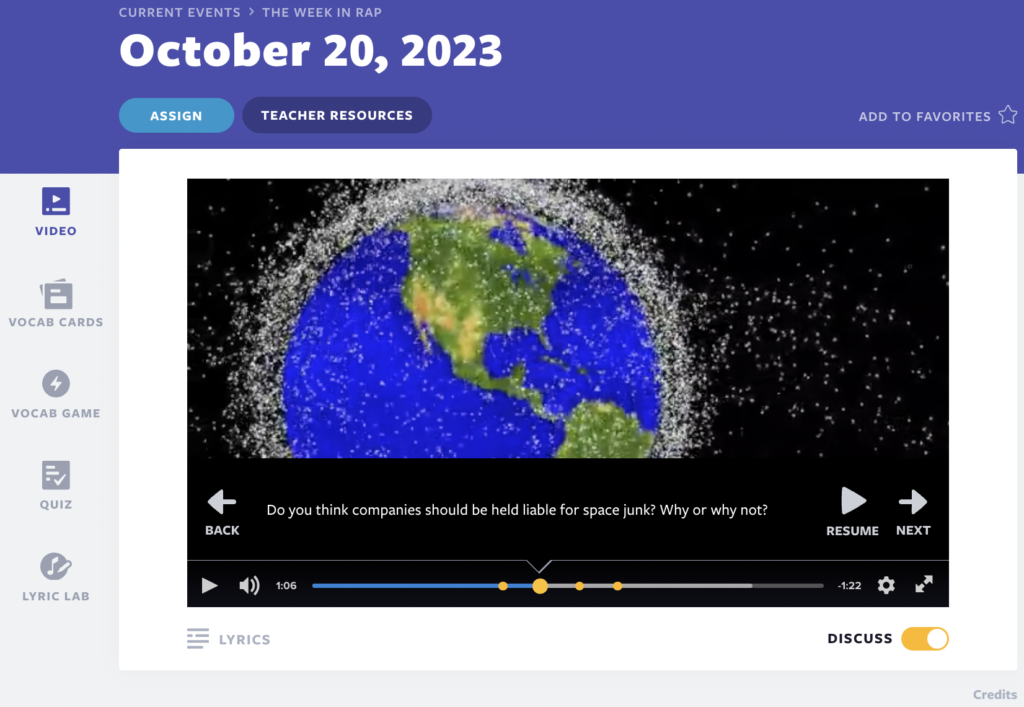
5. Debate news stories
Capitalize on controversial topics. Encouraging debates around current events allows students to explore multiple perspectives, opinions, and interpretations of the news. By assigning roles or viewpoints to students, such as supporting or opposing viewpoints presented in the articles, teachers can prompt in-depth discussions that encourage students to articulate arguments based on evidence, reasoning, and critical analysis. This exercise challenges students to evaluate the validity of sources, analyze biases, and consider multiple angles on complex issues present in news articles. Debates can range from formal argumentation to a more casual discussion. In all cases, they encourage interactions and socialization in the classroom.
Debate a Week in Rap news story to help students clarify their understanding of a topic, develop opinions, and understand other views of current events. Have students create a statement related to that topic that is written in the affirmative. For example, “LOL” should be added to the Oxford English Dictionary. Divide the class into two or more groups and assign each group a side of the debate. One will argue for the statement, and one will argue against it. Remind students they don’t need to personally agree with the statement in order to argue for it in a debate. Have student groups research the topic and develop a plan with key points that align with their side’s perspective. Students should also think about what the other side may say and come up with points to address when that happens. Once they’ve finished researching, students can have a debate. One student from each side will present their points, and each side will have time to rebut (or argue against) the other side’s arguments before the class declares a winner.
6. Compare current events and history
Comparing current events to history is essential as it provides students with a broader contextual understanding of the present, revealing patterns and connections between past occurrences and contemporary issues. This comparison enables students to analyze the root causes and consequences of current events while recognizing societal changes, continuities, and lessons learned from the past.
Start this activity by giving students a few minutes to write responses to explain what history is, what current events are, and what the similarities and differences between both. Use daily news stories as a powerful way to teach students how to compare and contrast while building critical thinking skills.
Examine the key question of what is history with Week in Rap videos. Next, show students the following four videos:
- The most recent Week in Rap
- The most recent Year in Rap
- The most recent 18 Years in Rap
- Select a lesson from the social studies folder about a historical event or time period, for example, The French Revolution.
After watching, students will likely say that The Week in Rap is current events and that the French Revolution is history, but what about the other two videos? To add additional room for thought, play The Year in Rap from a previous year and ask if there is a difference between the history and current events status of that year and today.
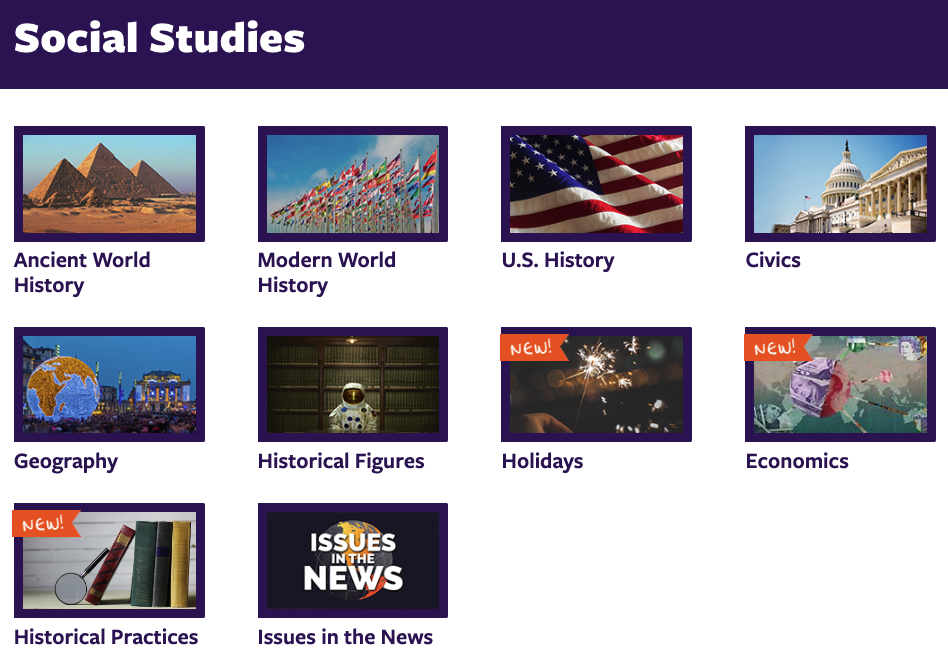
After the discussion, have students write longer responses on the definitions of history and current events. They can touch on the following questions:
- What are current events?
- What is history?
- What is the relationship between the two?
- When do current events become history?
- What sort of current events become part of the history books and which don’t? Why do you think that is?
- What were the biggest events from this year? Do you think they’ll be considered important in 20 years?
- How is your current life a part of history?
Start using Flocabulary when teaching current events
By embracing news and events within the curriculum, educators provide opportunities for meaningful discussions, enabling students to analyze, evaluate, and form their opinions based on factual information. Utilizing various strategies such as making text connections, exploring students’ interests, analyzing article structure and language, engaging in debates, and comparing current events to history, educators can create a dynamic and comprehensive learning environment. By leveraging resources like Flocabulary’s seven days in a week rap videos, teachers can seamlessly integrate current events into the classroom, fostering media literacy, and helping students understand global issues.
New to Flocabulary? Teachers can sign up for a trial to access our lesson videos and assessment activities. Administrators can get in touch with us to learn more about unlocking the full power of Flocabulary through Flocabulary Plus.
